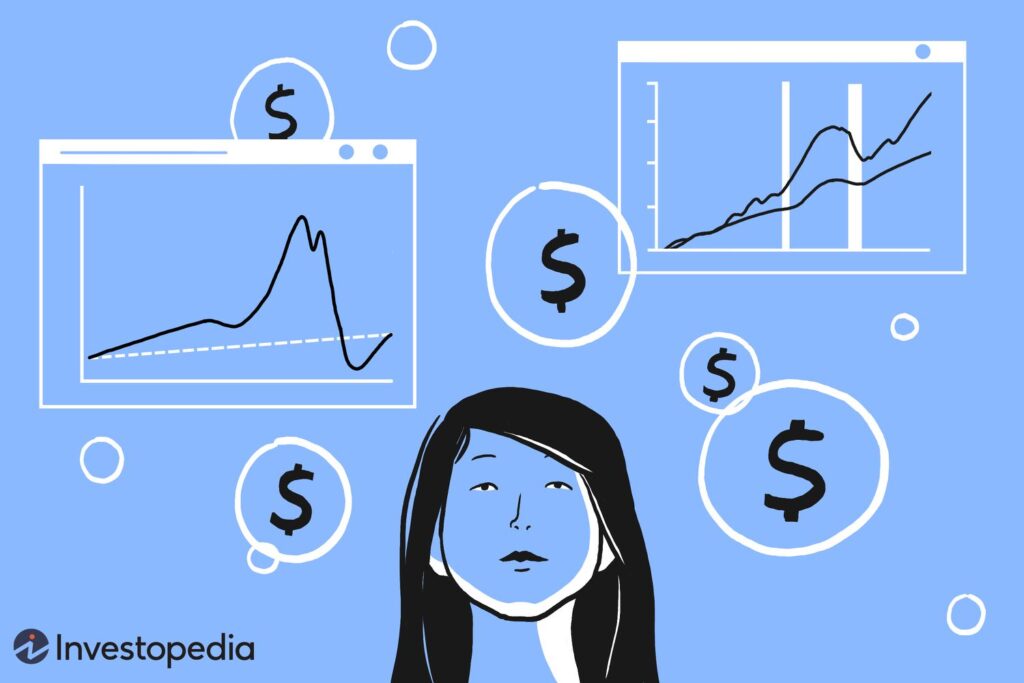The financial markets are sending a series of conflicting and deeply unsettling signals. On one hand, major stock indices are flirting with all-time highs, driven by a seemingly unstoppable technological revolution in Artificial Intelligence. On the other, a sense of unease permeates the conversation, a nagging feeling that the soaring prices have become detached from the underlying economic reality.
This dissonance has led to the revival of a critical and often-feared question: Are we in a new financial bubble?
A financial bubble is a dangerous phenomenon where the price of an asset—be it stocks, real estate, or a new technology—rises to a level that is drastically disconnected from its fundamental value. It’s a market driven not by rational analysis, but by intoxicating stories, speculative fervor, and the “greater fool” theory—the belief that you can always sell an overpriced asset to someone even more foolish.
Predicting when a bubble will pop is a fool’s errand. However, identifying the classic warning signs is an act of financial prudence. Here are the key signals you should be watching right now to determine whether the ground beneath the market is solid or perilously thin.

1. Extreme Market Concentration
A healthy bull market is a broad one, with many different sectors and companies participating in the rally. A key warning sign of a bubble is when the entire market’s performance becomes dependent on a tiny handful of mega-stocks.
- What It Is: Market concentration occurs when the gains of a major index, like the S&P 500, are overwhelmingly driven by a few superstar companies.
- Why It Matters: This creates a fragile market structure. The entire index becomes a hostage to the fortunes of a few names. If one or two of these giants were to falter, it could trigger a disproportionately large market downturn. It’s a sign that investor capital is chasing a narrow theme rather than broad economic growth.
- What to Watch Now: The “Magnificent Seven” (Apple, Microsoft, Alphabet, Amazon, Nvidia, Tesla, and Meta) have been the primary engine of the market’s recent gains. Monitor whether this trend continues to intensify or if the rally begins to “broaden out,” with smaller companies and different sectors starting to participate meaningfully. A continued narrowing is a significant red flag.
2. Euphoric Sentiment and a Fear of Missing Out (FOMO)
Bubbles are fundamentally psychological events. They are inflated by a powerful wave of public euphoria, where caution is thrown to the wind and replaced by a desperate fear of missing out on easy, life-changing gains.
- What It Is: This is when financial speculation becomes a mainstream cultural phenomenon. Taxi drivers give stock tips, dinner party conversations revolve around crypto gains, and media headlines are dominated by stories of overnight millionaires.
- Why It Matters: When the “dumb money” of the retail public piles into the market with no understanding of fundamentals, it’s often a sign that the “smart money” is quietly heading for the exits. This late-stage rush is what provides the final, parabolic surge just before the collapse.
- What to Watch Now: Pay attention to social media trends, the tone of financial news coverage, and the behavior of those around you. Is the narrative focused on disciplined, long-term investing, or is it dominated by get-rich-quick schemes, meme stocks, and high-risk options trading? A surge in the latter is a classic symptom of market mania.
3. Valuations Detached from Reality
At the heart of every bubble is a simple math problem: the price of assets far exceeds their intrinsic value. One of the most common ways to measure this is through valuation metrics like the price-to-earnings (P/E) ratio.
- What It Is: A P/E ratio tells you how much you are paying for one dollar of a company’s annual earnings. A historically high P/E ratio for the overall market suggests that stock prices are stretched and investors are willing to pay an extreme premium based on future growth expectations.
- Why It Matters: While high valuations can be sustained for a time, history shows they eventually revert to their long-term average. The higher they stretch, the more painful the eventual correction tends to be.
- What to Watch Now: The Shiller P/E ratio, which uses a 10-year average of inflation-adjusted earnings to smooth out economic cycles, is currently at a level that has only been surpassed during the dot-com bubble of 1999 and the lead-up to the 1929 crash. Watch whether valuations for both the overall market and its leading tech companies continue to expand without a corresponding surge in actual earnings growth.
4. The “This Time Is Different” Narrative
Every major bubble in history has been accompanied by a compelling and seductive story—a narrative that explains why the old rules of valuation no longer apply. For the dot-com bubble, it was the internet. For the current market, it is undoubtedly Artificial Intelligence.
- What It Is: This is the collective justification for paying any price for an asset. The argument is that a new, transformative technology is so revolutionary that it renders traditional financial metrics obsolete.
- Why It Matters: While the underlying technology is often genuinely transformative, the narrative is used to fuel unchecked speculation and ignore clear signs of overvaluation. The belief that “this time is different” is one of the most dangerous phrases in finance.
- What to Watch Now: Listen to how the AI story is being told. Is it a balanced discussion of a powerful technology with long-term productivity benefits, or is it being used as a blanket excuse for any and every valuation, regardless of a company’s actual profitability or business model? When the narrative becomes a substitute for due diligence, the bubble is inflating.

Conclusion: How to Navigate an Uncertain Market
So, are we in a bubble? The honest answer is that it’s impossible to know for sure until after it has popped. However, the warning lights are undeniably flashing. The extreme market concentration, the pockets of speculative euphoria, the stretched valuations, and the all-encompassing “AI is different” narrative create a set of conditions that are historically consistent with a market bubble.
For the prudent investor, the goal is not to perfectly time the market, but to prepare for a range of outcomes. This means:
- Staying Diversified: Ensure your portfolio is not overly concentrated in a few high-flying names or a single sector.
- Rebalancing Regularly: Periodically trim your winners that have grown into an outsized position and reallocate the profits to undervalued parts of your portfolio.
- Focusing on Quality: Favor companies with strong balance sheets, real earnings, and proven business models.
- Avoiding FOMO: Make investment decisions based on your long-term plan, not on market hype or fear.
Navigating a potential bubble is a test of discipline, not prediction. By recognizing the signs and sticking to sound financial principles, you can protect your capital and ensure that your long-term goals are not derailed by the market’s inevitable manias and panics.